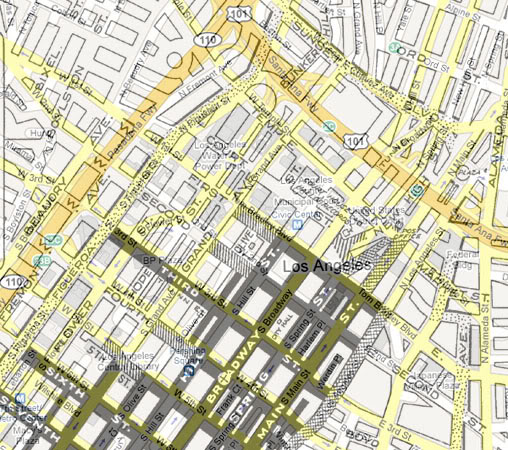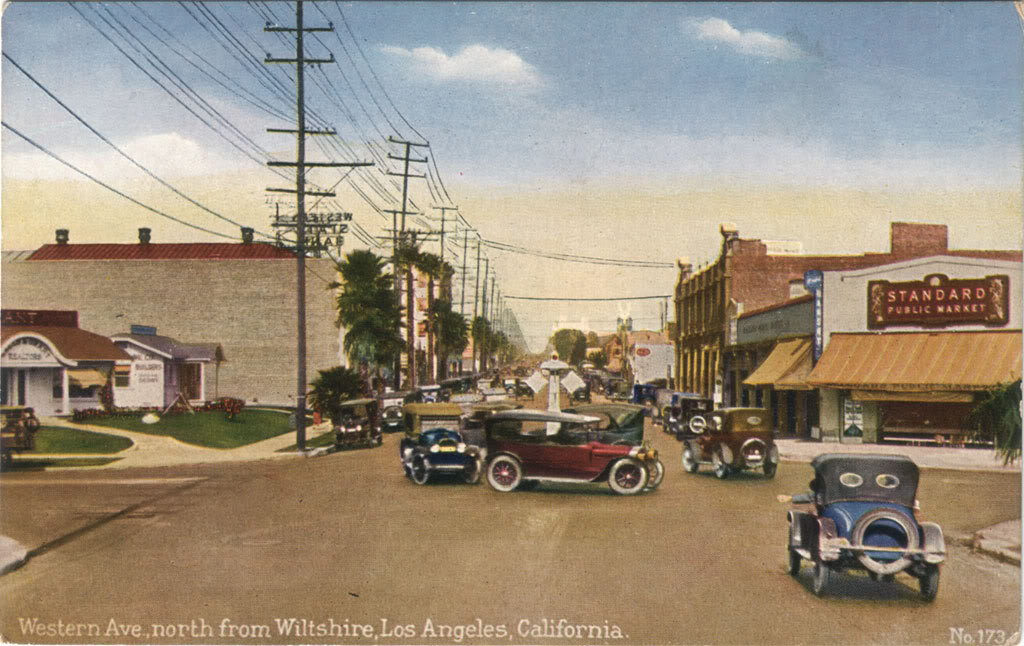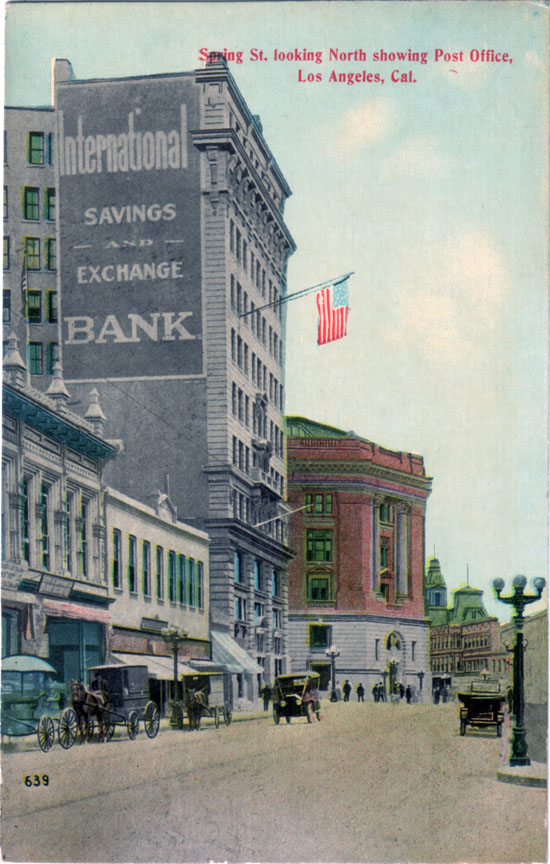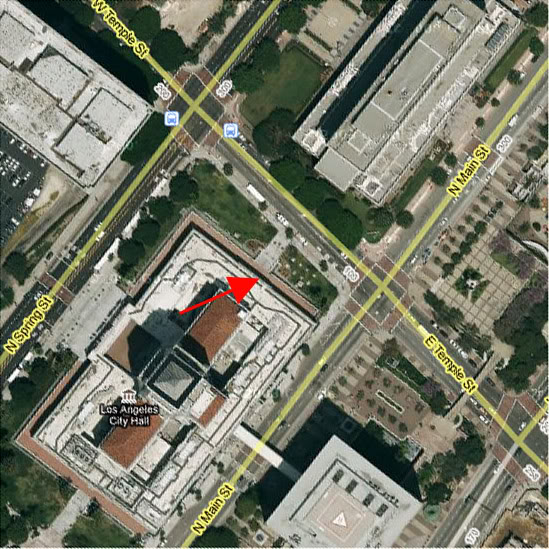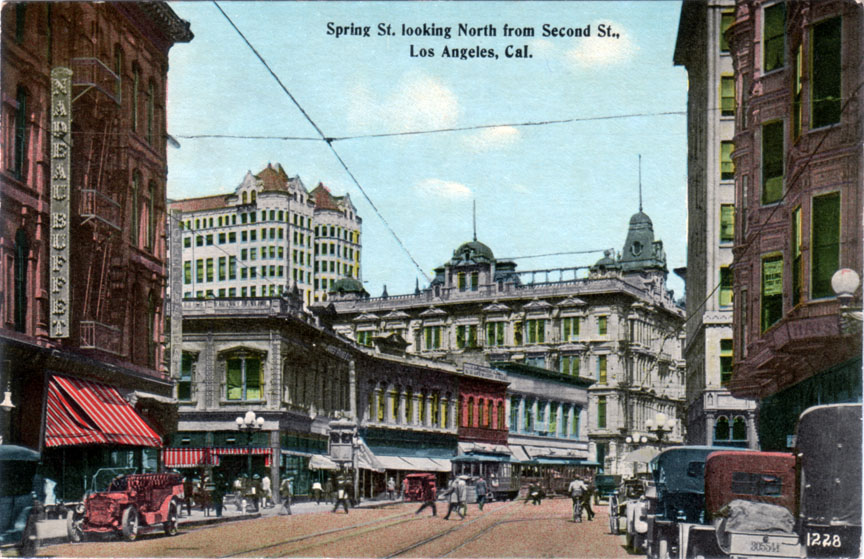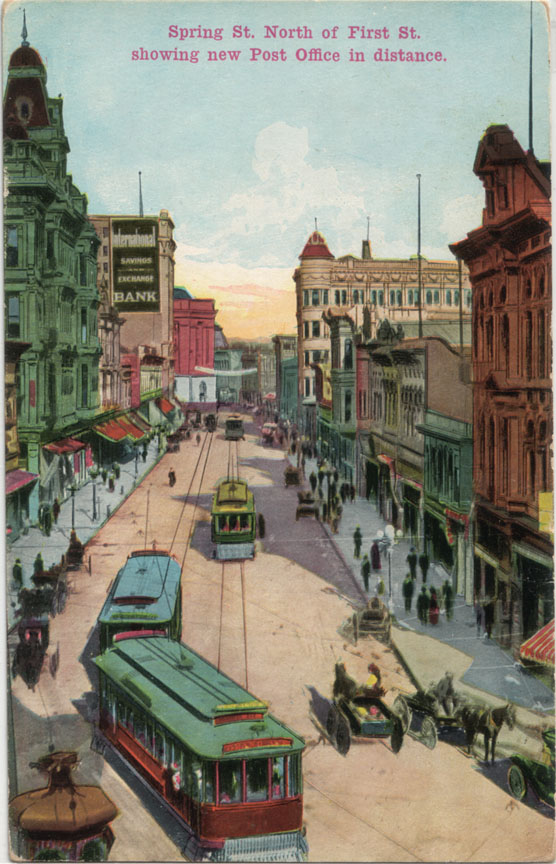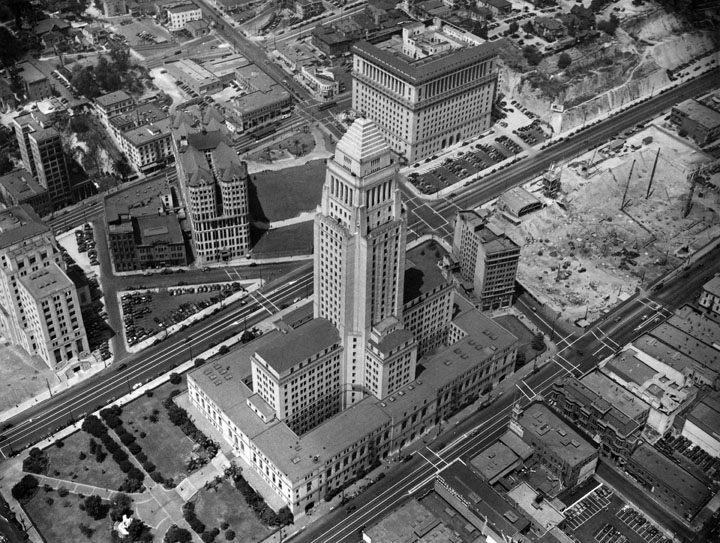Found a lovely image
online yesterday of one of my very favorite views of old Los Angeles. It depicts downtown as seen looking south from the clock tower of the County Court House (1888-1936), formerly located at the corner of Broadway and Temple Street. I have almost a dozen postcards depicting this view, but none are anywhere near as nice as this one.
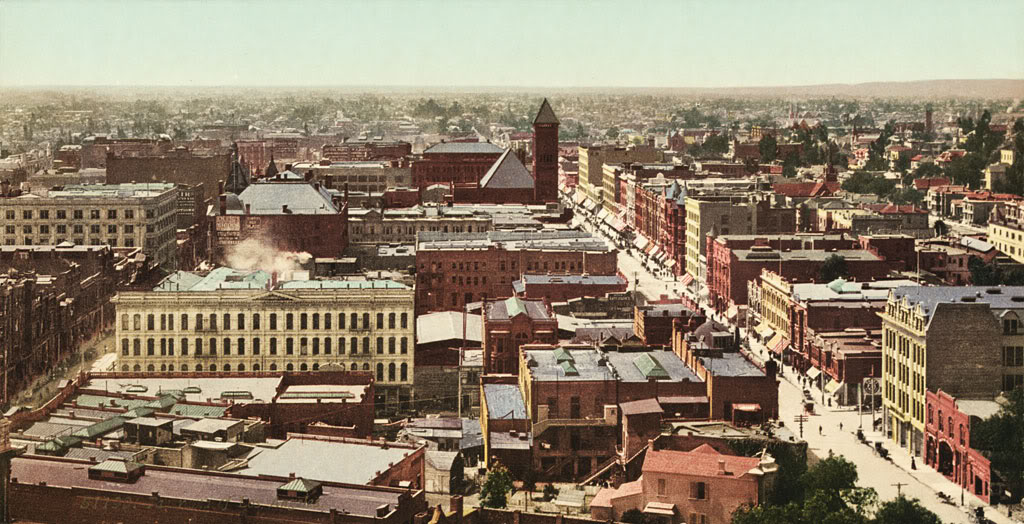
Wikimedia Commons.
If you live in L.A. today, ask yourself – does anything here look familiar to you? Anything at all? If I told you that's Spring Street at left and Broadway at right, would that help? Probably not, because hardly anything you see in this picture still exists today.
I'm no real expert, myself, but I can identify only four structures in this image that are still standing: the Bradbury (1893), Irvine-Byrne (1895) and Homer Laughlin (1896) buildings around Broadway and Third, and the Douglas Building (1898) at Spring and Third.
Because of the presence of the Douglas Building, this image can't be from earlier than 1898. However, it can't be later than 1903, because the Bryson-Bonebrake Block at the NW corner of Spring and Second still has its ornate Victorian gables, and construction of the Braly Building at the SE corner of Spring and Fourth has not yet begun. And actually, I think I can pin it down to 1900 exactly, because I have a photo of the gabled Bryson-Bonebrake dated 1900 that has at least two of the same three advertisements painted on the north side of the building.
*whew!* History can be really exhausting sometimes!
;)Anyway, here is the old Court House from whose tower that picture was taken.
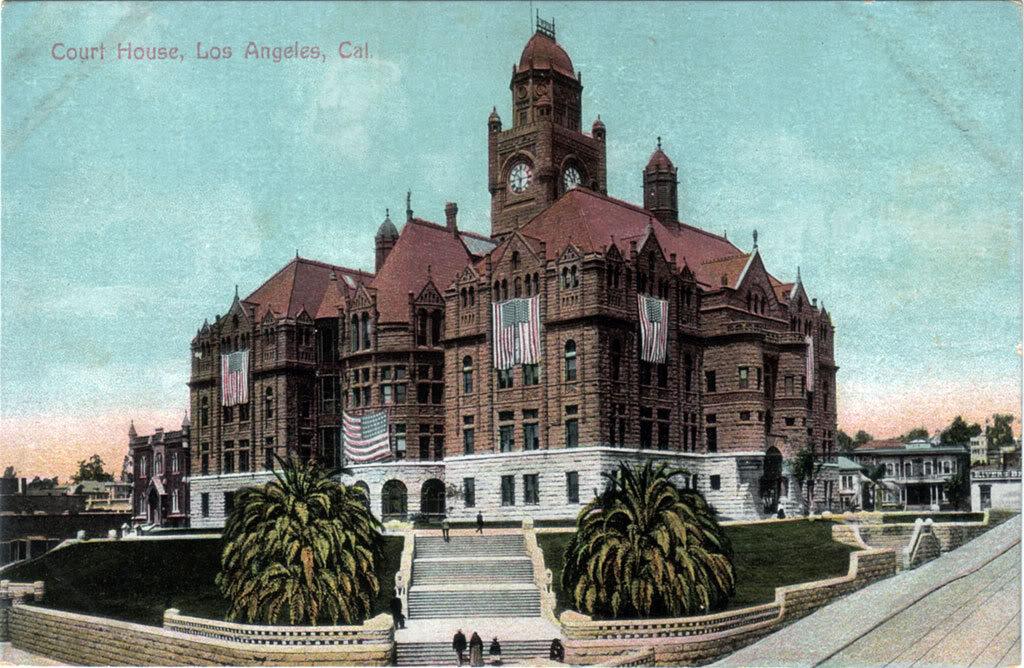
I guesstimate this view dates from roughly the same period as the vista of downtown. It's definitely from 1896-1908, because at least one of the smaller U.S. flags there has 45 stars. The height of the palms, however, makes me suspect that it's more likely closer to 1908 than 1896. That big flag has only 44 stars, though (that was our flag from 1891-1896), so who really knows. I'll still go with
circa 1908, I think. It really can't be much later, because construction on the new Hall of Records just south of the Court House began the following year, and there's no evidence of that happening yet.
Oh yeah, I almost forgot – to get your bearings, the part of downtown where the majority of the really tall skyscrapers are today would be at the extreme right of the top picture. In fact, only one or two of them would be visible from this frame of reference if it existed now. Not only is this original vantage point gone, though, pretty much everything else someone could see from there is, too. So it goes in ever-changing Los Angeles...
